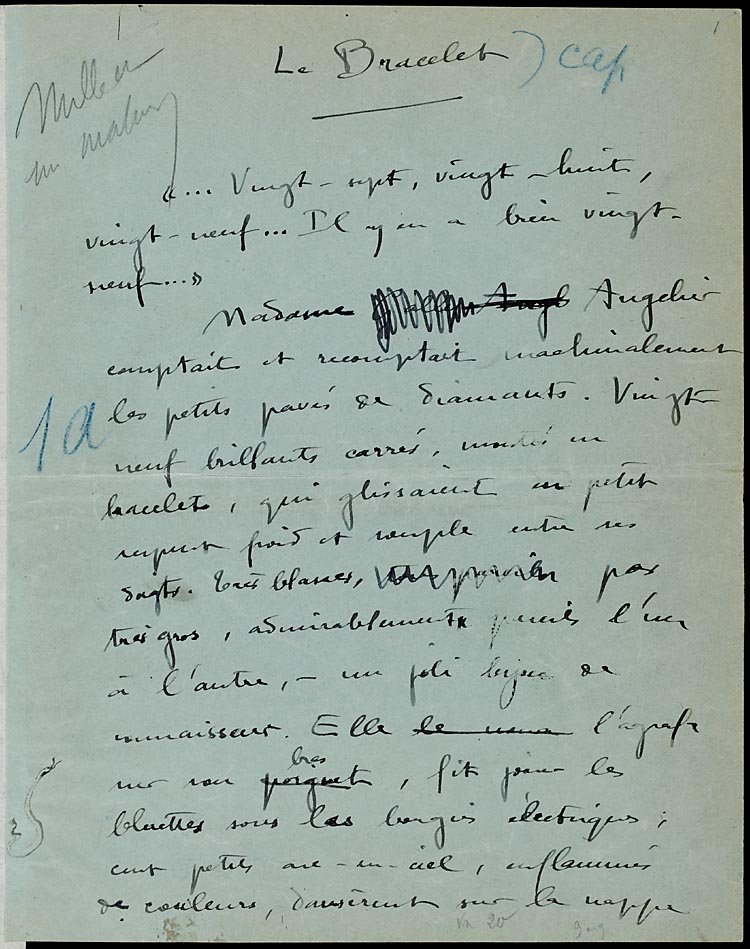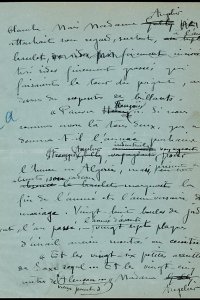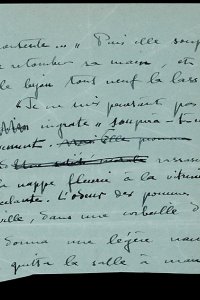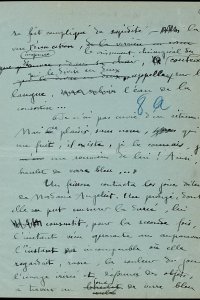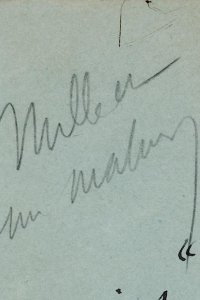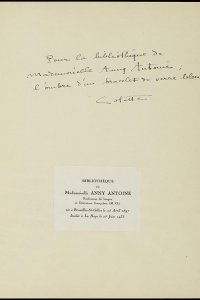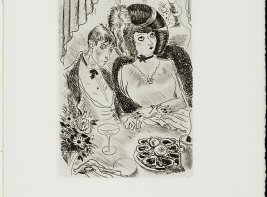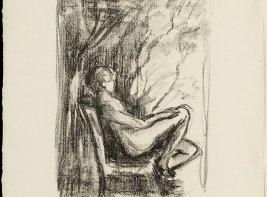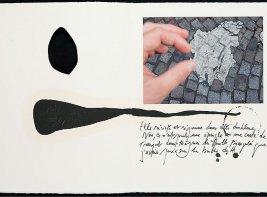Le bracelet
Year: 1922
Author: Colette (1873-1954)
The hidden woman
The manuscript of one of those stories is owned by the Koopman Collection of the National Library of the Netherlands. This story about a bracelet first appeared in Le matin on 30 December 1922. Colette was then 49 years old, and wrote the series of short tales inspired by gossip. They were collected for publication in 1924 under the title La femme cachée (The hidden woman). In the front of Anny Antoine's copy, she wrote the following handwritten dedication: 'Hide this multi-faceted woman in the bookcase of Miss Anny Antoine'. It is a collection of black pastorals, which she calls 'Contes de mille et un matins': stories of thousand and one mornings… They are like newspaper reports on murder, betrayal, loneliness and dissatisfaction.
The manuscript for 'Le bracelet' differs strongly from the published text: several words have been replaced by better-chosen ones, and it is clear that the text was jotted down quickly and that new details were added while it was being written. 'Le bracelet', the bracelet, is about the rich Mrs. Angelier, who suddenly realises, in the midst of all her pearls, rubies and jade, that she had once been happy as a ten-year-old girl with absolutely nothing: with a bracelet made of blue glass! That bracelet was broken before long, so now she decides to search for a bracelet just like that one. After many travels across Paris, she finally finds the coveted trinket, but alas: its former magic cannot be recovered.
Mrs. Angelier had entered this melancholy mood because of her annual wedding present from her husband: the umpteenth pearl necklace. She compares their years together to a hopeless mountain of jewellery. And she realizes that she is no longer able to love her husband as she had before. This would never happen to Anny Antoine. She and her engineer Louis Koopman never made it past their engagement, which was terminated cruelly. The newspaper report about Anny's grisly death… what might Colette have made of that?
Bibliographical description
Description: Le bracelet / Colette. - Ca. 1922
Note: Manuscript, copy for the printer. Published in Le matin, 22 December 1922
Shelfmark: KW 77 G 20
References
- Paul Argonne, Colette: Une dame, trois rois et quelques cavaliers. Paris, Belfond, 2004
- Paul van Capelleveen, Sophie Ham, Jordy Joubij, Voices and visions. The Koopman Collection and the Art of the French Book. The Hague, Koninklijke Bibliotheek, National Library of the Netherlands; Zwolle, Waanders, 2009
- Paul van Capelleveen, Sophie Ham, Jordy Joubij, Voix et visions. La Collection Koopman et l'Art du Livre français. La Haye, Koninklijke Bibliotheek, Bibliothèque nationale des Pays-Bas; Zwolle, Waanders, 2009
- Hortence Dufour, Colette, la vagabonde assise. Monaco, Rocher, 2000
- Claude Pichois, Alain Brunet, Album Colette. Paris, Gallimard, 1984
- Judith Thurman, Secrets of the flesh:A life of Colette. London, Bloomsbury, 1999
